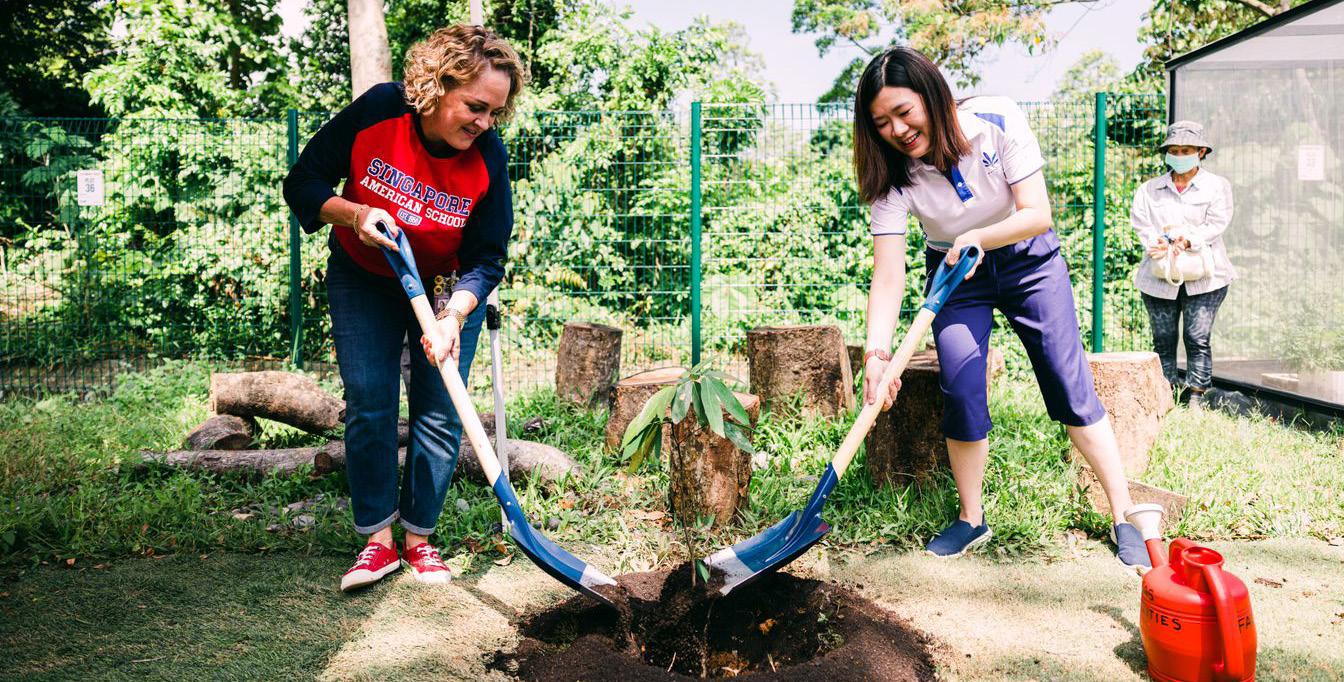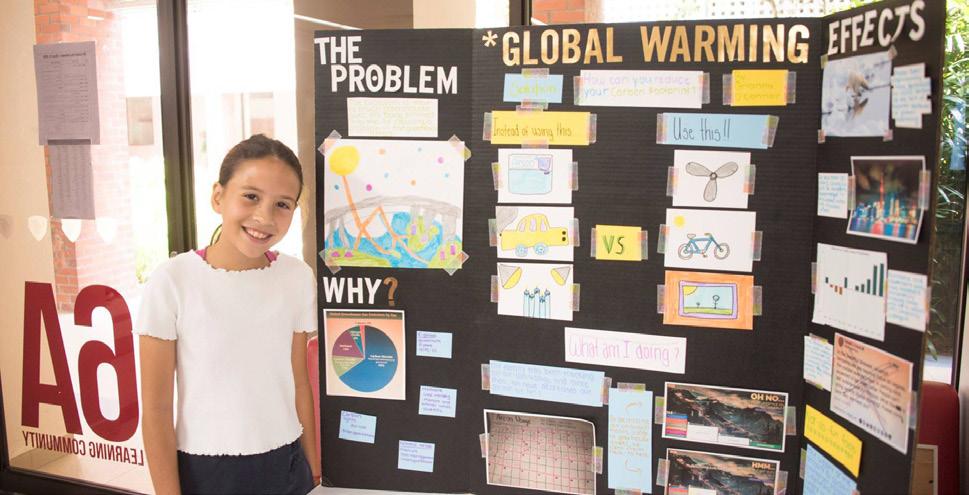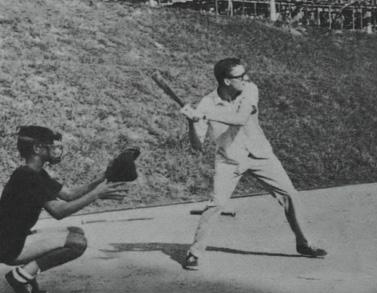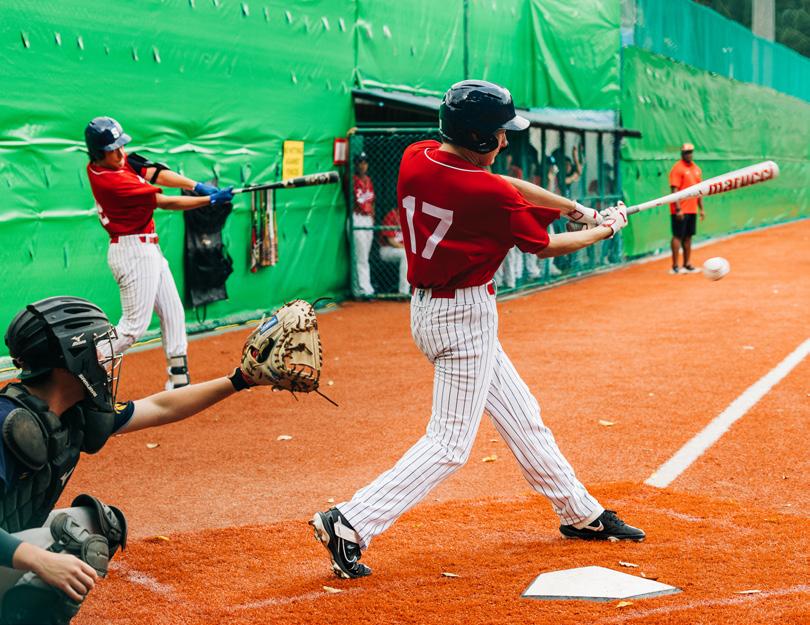
4 minute read
A Culture of Sustainability and Wellness
High Performance Envelope And Optimized Shading Design
Accessing to a controlled and well-balanced daylit space will improve students and educators' health and wellbeing. Internal blinds will be provided to minimize glare potential
By SIMON THOMAS Director of Facilities and Services
Singapore American School continues to strive towards sustainability and environmental stewardship. With SAS Reimagined, our sustainable design vision creates an environment where students can feel and see its significance and are empowered to make changes. The design promotes sustainability education and equips students with knowledge, innovation, and experiences. The campus is a living laboratory, where every corner becomes a potential learning experience, allowing students to explore and engage with sustainability concepts in various aspects of their education.
Human have an affinity toward the natural world, SAS will incorporate gardens and biophilia features to engave occuants' connection with nature. Views toward the central landscape courtyward will enhance the psychological mood of students and educators.
A
Higher Indoor Environmental Quality
The new elementary school interior's finishes will be low-emitting materials with low volatile organic compounds (V)Cs) paints, coatings, and adhesives, which will result in betterindoor overall environmental quality. Air filtration media will further improve the overall indoor air quality.
silence can be just as distractive as it highlights acoustic disturbances
Outdoor
Sustainable Building Design
SAS Reimagined, our campus upgrade project, is designed with sustainability in mind, and features solar panels, rainwater harvesting, and energy-efficient lighting. Focusing on optimizing human performance, we continue to work towards an environment that encourages students and adults to perform at their best and feel well while learning.
A school is a place where people come together and share the same values. Forty years ago few people cared about the fragility of the earth, but today we do care about energy use and climate change. Our new campus is important because it can be the best expression of our responsibility towards sustainability. This value will be applied not only to the visible part of the buildings, but also to the science and knowledge behind it and will inspire students to be good stewards of the environment.
Biophilic design, good air quality, natural light, and acoustics are part of the SAS Reimagined design process. The aim is to contribute to overall well-being of our students and educators and offer enhanced learning experiences. SAS has also implemented standards like WELL and the Living Building Challenge to go beyond energy and water efficiency. Factors affecting wellness, such as acoustics, carbon footprint reduction, and even choice of materials, have been taken into considerartion throughout the design process.
Sustainable Operations Sustainable Dining
Over the years, SAS has implemented a number of energy-saving measures, such as motion-sensor lights and water-saving fixtures. SAS also has a zero-waste goal and has implemented a number of initiatives to reduce waste, such as composting and recycling. Our sustainability initiatives have helped to greatly reduce our environmental impact, including our carbon footprint, water usage, and waste production.

Student Engagement and Environmental Stewardship

SAS provides students with opportunities to learn about sustainability and environmental stewardship through its curriculum and extracurricular activities. As part of the interdisciplinary sustainability unit, sixth grade learning communities at SAS spent time exploring the complexity of sustainability through an introduction to the United Nations Sustainable Development Goals and the Sustainability Compass, issues of sustainability on our nature, society, economy and well-being, and considering factors that influence and the impact of actions we may take to address issues of sustainability. They also examined local sustainable practices in Singapore’s new Tengah town, with the role of running a sustainable design architecture company and creating a specialized and sustainable HDB apartment in Tengah for their client.
SAS continues to build a culture centered around sustainability and wellness. Sustainability is integrated into the curriculum and daily practices. A few years ago, early learning center students began a research project and learned about recycling in Singapore. After collecting over 200 plastic forks and spoons in just three weeks, students demonstrated empathy for the natural world. They prepared a persuasive presentation for Mr. Tan who runs the high school cafeteria and convinced him to offer metal forks and spoons to the children in the early learning center and spread the word to other parts of the school.

Did you know?
We serve sustainably-sourced food in the cafeterias, and students are encouraged to bring their own reusable lunch boxes!
Sustainability is an integral part of education today and a vital part of the SAS vision for cultivating exceptional thinkers prepared for the future. The plans for the new elementary school provide potential possibilities to integrate the important lessons of sustainability throughout the curriculum by providing opportunities for the kids to not only create their own ideas, but to execute and be hands-on throughout the process so they can learn to be proactive and active, responsible and respectful environmental stewards.
SHALYN WONG, PARENT
Collaboration with the Community
Located in a quiet enclave of Woodlands, next to the west fields at SAS, the SAS Community Garden offers 99 plots for neighboring residents. Gardeners come in every day to nurture their greens, find a space to relax and bond, and socialize with fellow gardeners. "The community plays a key role in the stewardship for nature, and this partnership with the Woodlands community is instrumental in encouraging cooperation, volunteerism, a respect for diversity, and ecological awareness among those who engage in this work," said SAS Superintendent Tom Boasberg.
The SAS Eagles were born when the students voted on the team name in 1958–59. That year, SAS’s first varsity team, which consisted of seventh and eighth grade students, took the field in fast-pitch softball. In the first decade of sports at SAS, fast-pitch softball was the most important school sport.

Last year, IASAS celebrated 40 years. This year, SAS had the privilege of hosting both baseball and softball teams from five other IASAS schools, and both our teams captured gold on home turf.










